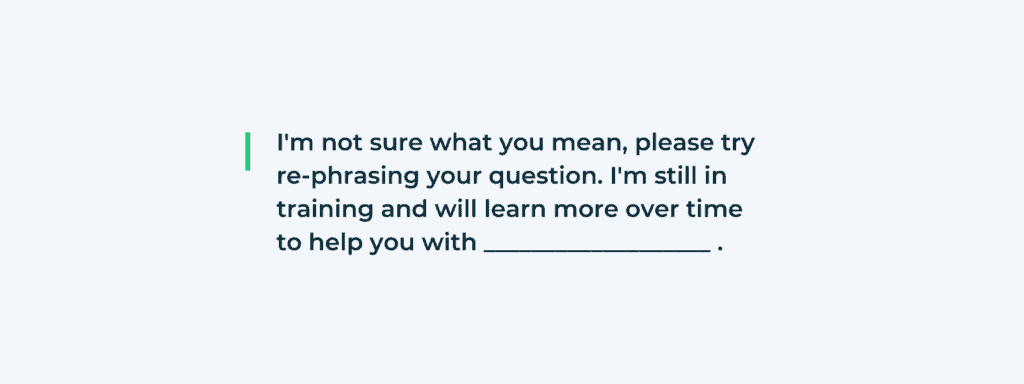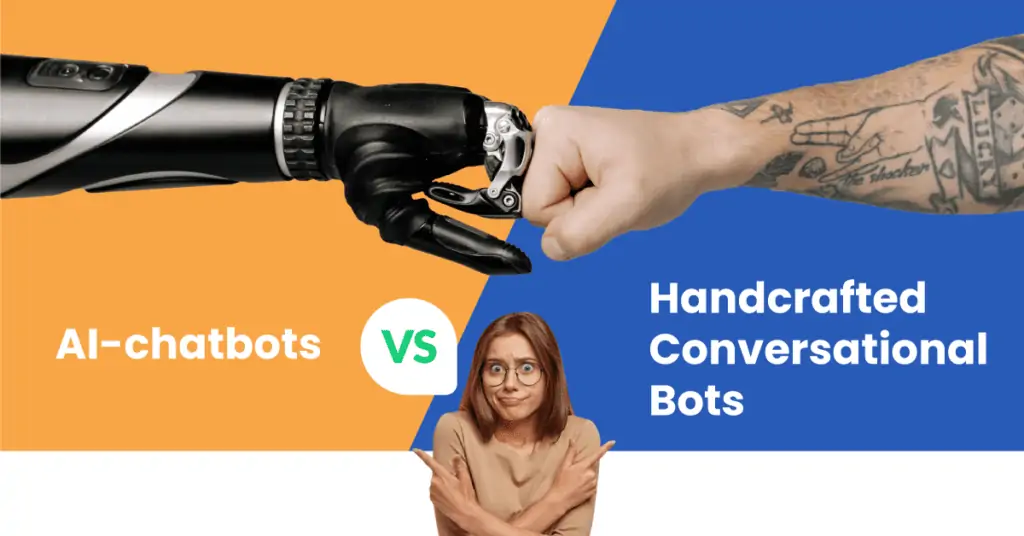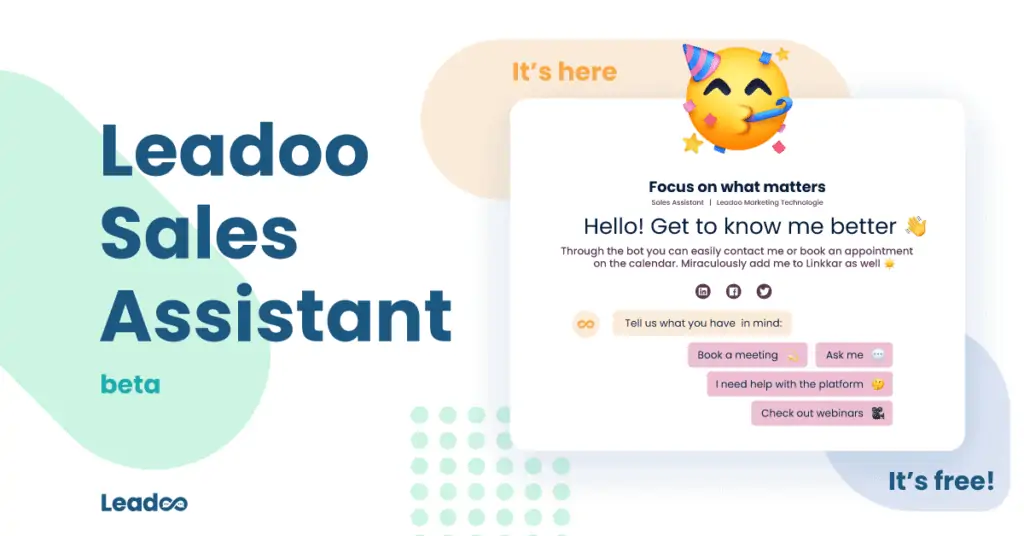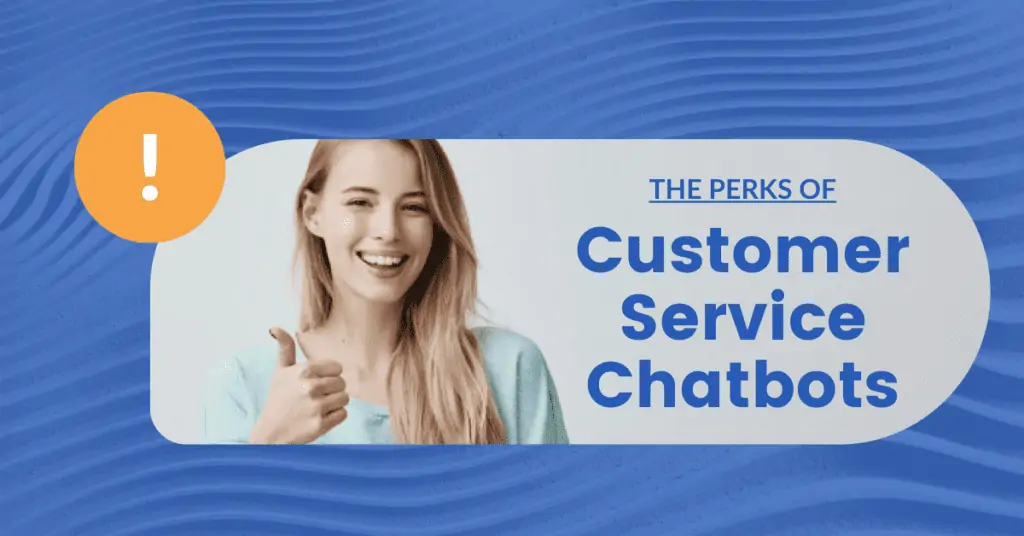So you heard that chatbot is the way to go this year. And now you’re wondering how to get started. Let me take a guess: Your palms are already sweaty about all the things you don’t understand about AI, ML and NLP? Don’t worry.
Chatbots don’t need to be intimidating at all. My goal is to provide an honest review of AI-based chatbots and handcrafted conversational bots. To make your life a little easier. If you are new to chatbots you might want to read this article to understand the basics.
Now, let’s get to it!
Chatbots, chatbots everywhere!
Bots come in many shapes these days, and so do chatbot providers. The space grows fast, and with the growth it becomes more difficult to make sense of the alternatives. But don’t worry! You being here shows that you’re already doing better than many of your dear competitors.
The market often presents chatbots as specifically AI-based, but bots don’t necessarily need the advanced tech behind them. AI obviously remains a hot topic, but fixating on the complexities can easily lead you astray from what you are actually trying to achieve with bots.
An alternative to AI-powered bots are handcrafted conversational bots. In essence, this means that the conversation paths are defined and built into the bot. The underlying tech may be simpler (no machine learning involved) but this approach emphasizes the need to understand your target audience. Having said that, you should understand the people bringing you money regardless of whether you use bots to chat with them or not.
Getting started and creating a winner bot
Part of the anxiety around AI is that you need to kick off an enormous project and allocate a senior-level tech team to make it through the jungle. I won’t go into detail on how to build an AI-bot because (1) I’m not an expert in the field and (2) you as a marketing or sales pro probably don’t care that much.
In any case, you will need heavy support, and most of the time you’ll feel uncomfortable not knowing what the engineers are talking about and how the final product will work.
On the other hand, handcrafted conversational bots allow you to get off to a really quick start. You can easily build a completely credible bot and publish it on the website in a matter of minutes.
The key thing to remember is that it helps to have an idea of what you want to achieve. Is it leads you’re looking for? Or maybe you want to recruit your next team member? Don’t just get a chatbot for the sake of it. Make it count. And use best practices to create great chatbots.
With handcrafted conversations, users are limited by a defined set of alternatives, but you can rest assured that they won’t hit a wall half-way through to conversion or the desperately needed answer. The dialogue is based on a decision tree which always works. And if you know your target audience, a few chosen options is all you will ever need. I’m not going deeper into bot design in this article, but you can read our Interaction Designer Jemmi’s pro tips here.
Chatbot optimization and maintenance
I hope by now you see chatbots as touchpoints that require continuous optimization. It is highly unlikely that any bot – whether AI-based or not – will remain fully relevant for more than months. This is simply because the digital world is in a constant change: your website, targets, and consumer behavior change.
It’s easy to adjust a handcrafted conversation compared to an algorithm:
- Check bot analytics for points in the conversation that are not performing as expected
- Rephrase questions, change the order of questions, or modify the structure accordingly
- Save changes and you’re good to go!
No need to re-think or re-teach an algorithm. Easy customizability means that you will actually make the adjustments when there’s a need for it. In the best case scenario, your provider will even suggest improvements and take care of them for you.
How much does a chatbot cost?
The difference in technological complexity becomes apparent in pricing. Advanced AI chatbot companies’ minimum project size commonly ranges from €30,000 to €100,000+. On top of this, you are charged an hourly rate for support and optimization.
Companies providing non-AI chatbots often operate in a SaaS subscription model. This means that you pay a monthly fee for a right to use the product on your website. Monthly fees range from €100 to €2000 based on what’s included in the plan.
You should also know that some providers base their pricing on the number of bots, conversations, or leads. Needless to say, this may bring surprises along the way and makes it harder to estimate the ROI of the solution in the first place.
Whether you’re a tech-head or not, I advise you to look for a plan that includes personalized service (incl. onboarding, optimization etc.). There’s great value to be gained from a team that has built thousands of bots and knows the ins and outs of website conversions.
Strengths and weaknesses
Artificial intelligence trumps hand-built conversation paths when it’s able to maintain a smoothly flowing dialogue. You’ll see below (and maybe you’ve experienced it yourself) that this is not always the case. At best, an AI-bot can provide a very human-like conversation, but one gap in the algorithm can result in an awkward anti-climax.
In all their intelligence, AI-bots still tend to have a low tolerance for real human language. Obviously, an answer like the one below puts a big dent on the conversation experience. The benefit of having sophisticated technology may be lost in an instant. Another weakness is that if people are given the opportunity to ask the bot anything, they will ask the bot just about anything. As a result, the conversation isn’t always moving towards conversion.

Handcrafted conversational bots don’t reach the adaptability level of AI. You can still emulate a real discussion by designing the flow well and giving the bot a personality and tone of voice that fit your brand. The conversations are easy to fix and improve. Sometimes, a set of defined options can actually be preferred, because typing (especially on mobile) can be cumbersome. Plus, the conversation always flows towards a goal defined by you.
As both have technological pros and cons, much comes down to the service part of the deal. When choosing a bot provider, my best advice is to focus on the service aspect. Having a dedicated expert to hold your hand can make all the difference in ensuring returns for your investment.
What gets the job done?
Do you absolutely need AI? In most cases, the answer is no, not really. AI chatbots are still an overkill for any small business and for most medium-sized businesses, too. Some large companies will be better off with artificial intelligence.
This is usually the case when organizing customer service for thousands or millions of consumers. Everything outside of a massive customer service function or a ginormous ecommerce can be handled with lighter tools.
Think about it this way: If your goal is to generate leads from your website, you should already know the questions and concerns that your prospects are seeking answers to. The same goes for handling frequently asked questions.
In other words, nothing is stopping you from designing conversation paths that address your website visitors’ needs perfectly well. Handcrafted conversations are surprisingly effective. On top of that, they’re quick to get started with and easy to improve as you go.
Be true to your targets and get started with chatbots
The increasing demand for chatbots is driven by changes in customer expectations. Our appreciation for self-service and 24/7 assistance has skyrocketed and we’ve learned to demand speedy two-way communication from brands online.
The chatbot train hasn’t passed, but it’s really getting up to speed. Get your ticket by disregarding meaningless hype and being true to the targets you have for chatbots and your website.


